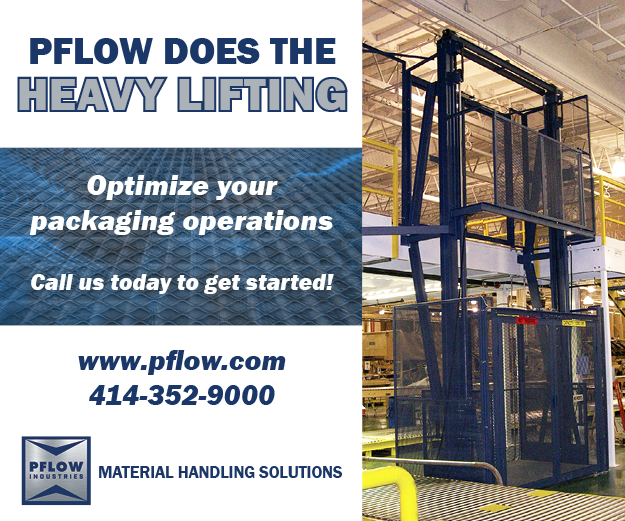Ecommerce in Times of Crisis: Improving Safety and Efficiency with Cloud-based Labeling
By Lee Patty, Contributor

After a cloud-based labeling system is applied, labels can be centrally controlled, changed and updated; deployed via a browser; and accessed from any location.
Ecommerce, which drove over $365 billion in 2019, faces enormous demand. When disaster strikes, it also becomes a critical lifeline for consumers who can’t access or purchase the items they need from brick-and-mortar stores. During these times, more than ever, it’s vital to ensure supply chain business continuity under all conditions—and this requires the right tools to move inventory and ship products as quickly as possible to those who need them.
For label creation and management, this means stepping away from legacy systems and manual processes and adopting cloud-based solutions that optimize processes, enable efficiencies and ensure any applicable regulations are met. Most importantly, in times of crisis, engineers do not have to come onsite to deploy or configure your label-management system, and any authorized remote user with the right access can quickly alter and print labels that are centrally stored.
Once all the processes and information required to produce and maintain labels are centralized in the cloud, companies can maintain operations remotely and deliver products faster, with fewer errors and less resources.
Benefits & Drivers to Cloud-Based Label Management
After a cloud-based label-management system is applied, labels can be centrally controlled, changed and updated; deployed via a browser; and accessed from any location. This encourages improved supply chain collaboration, enhanced agility and quality, and reduced costs.
Improved collaboration from any location: Cloud-based label management enables more collaboration with business partners. Labels are easy to create, share and print through a browser interface, which encourages suppliers to use a standardized label format. Not only does this promote labeling consistency across a supply chain, it also helps prevent product counterfeiting and diversion—and enables better use of technologies, such as radio frequency identification (RFID), to automate inventory management.
Enhanced agility from a business-user friendly UX: Legacy systems can require extensive IT assistance to make new label templates or process change requests at different facilities. A more modern label-management solution can automate and digitize labeling processes, so IT staff can make label changes faster or delegate the task to empowered business users to quickly create and alter labels.
Consistent results from a central, interoperable system: Modern label-management systems can interface with a host of different label and direct-marking printers, no matter the manufacturer. This interoperability will prevent reworking of labels; discarding of mislabeled products; or large upfront costs on solutions that won’t integrate with other systems. It also creates a consistent environment, especially for organizations that have locations spread across large distances.
Improved quality assurance and reduced human error: Centrally storing only one version of a template guarantees proper integration with your enterprise resource planning (ERP) or manufacturing execution system (MES). It also reduces chances for human error by introducing automation and reducing redundant tasks (like data entry) or maintaining separate templates. Additionally, product counterfeiting can be mitigated by implementing multiple levels of role-based security, so user access can be restricted in a way that only enables authorized parties to make changes to the files they need.
Clean up clutter and cut cost: Legacy labeling systems are fraught with many hidden costs. For instance, many enterprises have thousands of individual label files dispersed across numerous facilities, including redundant templates that even serve the same customer. By eliminating duplicate files, organizations cut the cost of maintaining them.
Tips for Optimal, Modern Label Management
A modern, cloud-based labeling solution provides a plethora of benefits, such as less burden and reliance on IT departments; cost savings from the digitizing of quality control; and greater transparency across the supply chain. However, when it comes to the best labeling system, not every organization’s needs fit the same mold—as every manufacturer and supplier will face their own specific challenges.
Though every organization has different needs, there are a few critical elements to look for when implementing a label-management system. Whether you need to configure and manage a system remotely to ensure business continuity or are able to work onsite, an adequate labeling solution must be able to:
Provide a central, web-based platform: A platform should be available to all your distribution centers, warehouses and major players throughout the supply chain. This streamlines operations by eliminating silos and promoting consistency.
Aim for better QA and streamlined operations: Organizations with manual, paper-based quality assurance processes have increased risk of errors; the cost of a recall due to a label error could be catastrophic. However, beyond the ROI saved from mitigating damages, the right system should not only eliminate errors and improve quality assurance, but also simultaneously save costs by improving efficiency. This is easily achieved by reducing manual processes.
Integrate with existing business systems: The world’s largest brands rely on business systems, such as MES, ERP and WMS, which are constantly being updated and improved upon. The right labeling systems should easily integrate with these systems and be able to scale alongside them as updates and improvements are made. This will speed up operations and improve supply chain efficiency by preventing outdated methods of labeling, like hard-coding label templates, using paper-based QA practices and locally managing labels.
Support flexible and efficient label printing: The right system should be able to automate printing workflows, support mobile systems and be printer-agnostic. This will save on the costs of unnecessary administrative work, like changing printer settings and training operators. It will also save capital expenditures on replacing hardware and will future-proof the environment to welcome new mobile and IoT devices.
Disaster can strike at any time, but even when teams are forced to stay in their homes, businesses must continue to function. As an essential element to supply chains, the business of labeling is no different.
Improving labeling and future-proofing at the same time doesn’t have to be hard. It just requires the right cloud-based, label-management system and integrating it with manufacturing, logistics and warehouse systems. If you haven’t already looked into such a tool, now is the time, as the need for efficient shipping and logistics won’t slow down, even if the world around us seems quiet and abandoned.
About the Author:
Lee Patty is vice president and general manager at NiceLabel Americas. In this role, Lee oversees the company’s sales, project delivery and operations in the Americas. Prior to NiceLabel, he co-founded Niceware International, LLC, a NiceLabel distributor, where he was responsible for marketing, healthcare product development and professional services. NiceLabel acquired Niceware in 2013, adding Lee to the global executive team.







